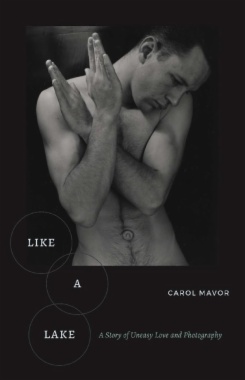A vivid, imaginative response to the sensual and erotic in postwar American photography, with attention to the beauty of the nude, both male and female
When photographer Coda Gray befriends a family with a special interest in a young boy, the motivation behind his special attention is difficult to grasp, “like water slipping through our fingers.” Can a man innocently love a boy who is not his own?
Using fiction to reveal the truths about families, communities, art objects, love, and mourning, Like a Lake tells the story of ten-year-old Nico, who lives with his father (an Italian- American architect) and his mother (a Japanese-American sculptor who learned how to draw while interned during World War II). Set in the 1960s, this is a story of aesthetic perfection waiting to be broken. Nico’s midcentury modern house, with its Italian pottery jars along the outside and its interior lit by Japanese lanterns. The elephant-hide gray, fiberglass reinforced plastic 1951 Eames rocking chair, with metal legs and birch runners. Clam consommé with kombu, giant kelp, yuzu rind, and a little fennel—in each bowl, two clams opened like a pair of butterflies, symbols of the happy couple. Nico’s boyish delight in developing photographs under the red safety light of Coda’s “Floating Zendo”— the darkroom boat that he keeps on Lake Tahoe.
The lives of Nico, his parents, and Coda embody northern California’s postwar landscape, giving way to fissures of alternative lifestyles and poetic visions. Author Carol Mavor addresses the sensuality and complexity of a son’s love for his mother and that mother’s own erotic response to it. The relationship between the mother and son is paralleled by what it means for a boy to be a model for a male photographer and to be his muse. Just as water can freeze into snow and ice, melt back into water, and steam, love takes on new forms with shifts of atmosphere. Like a Lake’s haunting images and sensations stay with the reader.
- Cover�������������������������������
- LIKE A LAKE�������������������������������������������������
- Title�������������������������������
- Copyright�������������������������������������������
- Dedication����������������������������������������������
- CONTENTS����������������������������������������
- Millions of Years Ago�������������������������������������������������������������������������������
- My Nico�������������������������������������
- Unfolding a Flood�������������������������������������������������������������������
- Turning the Key�������������������������������������������������������������
- The Memory of Lake Tahoe����������������������������������������������������������������������������������������
- My Mother’s Eyes����������������������������������������������������������������
- My Mother�������������������������������������������
- Coda����������������������������
- By Chance�������������������������������������������
- When Bamboo Shoots Poke Their Heads out of the Earth����������������������������������������������������������������������������������������������������������������������������������������������������������������������������
- Blue Rambler����������������������������������������������������
- Tender Buttons����������������������������������������������������������
- Waiting�������������������������������������
- Refusing to be Plucked����������������������������������������������������������������������������������
- We Want Roses�������������������������������������������������������
- She Sleeps with Him Every Night�������������������������������������������������������������������������������������������������������������
- She-Wolf Made of Rock�������������������������������������������������������������������������������
- Blue Ticket�������������������������������������������������
- Learning to Swim����������������������������������������������������������������
- Floating Studio, Floating Zendo�������������������������������������������������������������������������������������������������������������
- Fannette Island�������������������������������������������������������������
- Floating Zendos and Mentorgartens�������������������������������������������������������������������������������������������������������������������
- I Learned about Snowflakes����������������������������������������������������������������������������������������������
- I Learned about the Birds of Lake Tahoe�������������������������������������������������������������������������������������������������������������������������������������
- Summer Snow Cake����������������������������������������������������������������
- Love or Affection�������������������������������������������������������������������
- Mary’s Dream����������������������������������������������������
- Each Other’s Pockets����������������������������������������������������������������������������
- Black Cloth�������������������������������������������������
- Brown Kimono����������������������������������������������������
- Something Broke�������������������������������������������������������������
- The Voice of the Lake�������������������������������������������������������������������������������
- Moon Writing����������������������������������������������������
- Artichoke�������������������������������������������
- No Name for Him�������������������������������������������������������������
- What’s in a Name?�������������������������������������������������������������������
- Like Piles of Laundry?����������������������������������������������������������������������������������
- Frozen Pond�������������������������������������������������
- Coda’s Dream����������������������������������������������������
- Like Mother and Son�������������������������������������������������������������������������
- Fifteen Good Prints�������������������������������������������������������������������������
- Glass Moon����������������������������������������������
- Tsukimi Udon (Moon Noodles)�������������������������������������������������������������������������������������������������
- Soaring�������������������������������������
- Walking Underwater����������������������������������������������������������������������
- Open My Heart�������������������������������������������������������
- Like Rice on Chopsticks�������������������������������������������������������������������������������������
- Like a Sequence of Poems����������������������������������������������������������������������������������������
- Waiting, Still����������������������������������������������������������
- Morpheus����������������������������������������
- Blue Marble�������������������������������������������������
- Something Like Love�������������������������������������������������������������������������
- Afterword (Afterward): Like the Navel of My Dream of Nico�������������������������������������������������������������������������������������������������������������������������������������������������������������������������������������������
- Acknowledgments�������������������������������������������������������������
- Illustrations�������������������������������������������������������
- Notes�������������������������������

